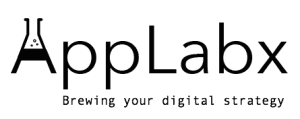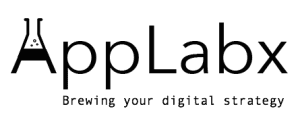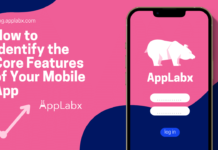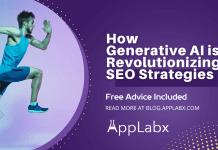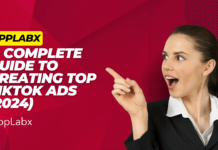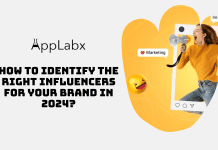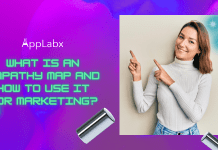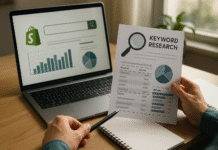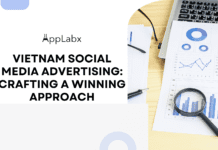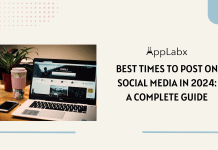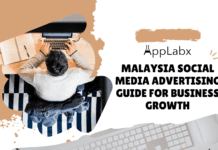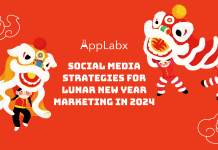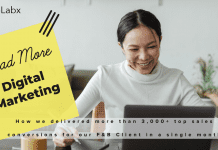Key Takeaways
- Shopify SEO builds long-term traffic, brand authority, and high ROI with lower ongoing costs.
- Paid ads deliver instant visibility, fast conversions, and precise audience targeting for rapid growth.
- A hybrid strategy combining SEO and paid ads offers the best balance of short-term gains and sustainable scalability.
In today’s highly competitive e-commerce landscape, Shopify has become a go-to platform for entrepreneurs and brands aiming to scale their online presence. But building a beautiful Shopify store is only the beginning. The real challenge lies in driving consistent, high-quality traffic that converts into paying customers. This leads to a critical question every store owner faces sooner or later: Should you invest in Shopify SEO or pour your marketing budget into paid advertising?
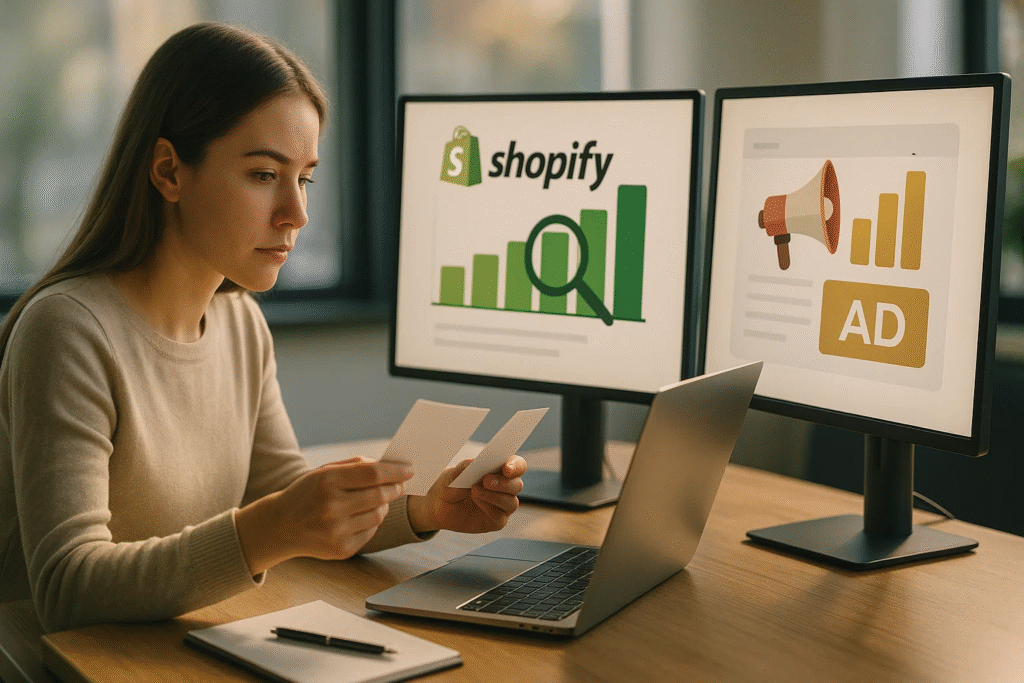
The answer isn’t as straightforward as one might think. Both SEO and paid ads offer unique advantages and serve different purposes in your digital marketing strategy. Shopify SEO is a long-term, sustainable approach focused on organic growth, brand credibility, and cost efficiency over time. It emphasizes optimizing your product pages, collections, blog content, and site structure to rank higher on search engines like Google. Done right, SEO can generate a steady stream of targeted, high-intent traffic without requiring you to pay for every click.
On the other hand, paid advertising delivers instant results. Whether it’s Google Shopping ads, Facebook campaigns, Instagram promotions, or TikTok videos, paid ads allow you to reach your target audience quickly and at scale. They are highly customizable, measurable, and can generate sales within hours of launching a campaign. But there’s a catch: once your ad spend stops, so does your traffic. This raises concerns about sustainability, long-term ROI, and dependency on ad platforms.
As e-commerce competition grows fiercer and ad costs continue to rise, knowing where to allocate your marketing dollars is more important than ever. Many Shopify merchants find themselves stuck in a loop—constantly spending on ads without building a lasting online presence, or investing in SEO without a clear understanding of when returns will materialize. To make a smart decision, it’s essential to evaluate each channel not only based on cost and performance but also based on how they align with your business goals, timeline, and growth stage.
This comprehensive guide will break down the key differences between Shopify SEO and paid ads, compare their pros and cons, and provide real-world use cases to help you decide where to invest for maximum long-term growth. Whether you’re just launching your Shopify store or scaling to new markets, understanding the strengths and limitations of both strategies will empower you to create a balanced, data-driven marketing approach that delivers results now and in the future.
But, before we venture further, we like to share who we are and what we do.
About AppLabx
From developing a solid marketing plan to creating compelling content, optimizing for search engines, leveraging social media, and utilizing paid advertising, AppLabx offers a comprehensive suite of digital marketing services designed to drive growth and profitability for your business.
AppLabx is well known for helping companies and startups use SEO to drive web traffic to their websites and web apps.
At AppLabx, we understand that no two businesses are alike. That’s why we take a personalized approach to every project, working closely with our clients to understand their unique needs and goals, and developing customized strategies to help them achieve success.
If you need a digital consultation, then send in an inquiry here.
Shopify SEO vs. Paid Ads: Where to Invest Your Marketing Budget for Long-Term Growth
- Understanding Shopify SEO
- Understanding Paid Ads for Shopify
- SEO vs. Paid Ads: Side-by-Side Comparison
- When to Choose Shopify SEO
- When to Choose Paid Ads
- Integrating SEO and Paid Ads: A Hybrid Strategy
1. Understanding Shopify SEO
Shopify SEO refers to the process of optimizing your Shopify store to appear prominently in search engine results pages (SERPs), especially on Google. Unlike paid advertising, which requires ongoing ad spend, SEO is an organic and sustainable method that focuses on improving your website’s visibility through content, structure, keywords, and backlinks. When done correctly, Shopify SEO can generate long-term traffic, improve conversion rates, and reduce customer acquisition costs over time.
What Is Shopify SEO?
Shopify SEO is a specialized subset of eCommerce SEO designed to align with Shopify’s architecture and built-in features. It includes both on-page and off-page techniques to help your store rank for relevant keywords and attract users who are already searching for products like yours.
Key Characteristics:
- Optimizing product and collection pages for keywords
- Enhancing technical elements like page speed, URL structure, and mobile usability
- Creating SEO-friendly blog content to attract organic backlinks
- Utilizing built-in SEO features such as customizable meta tags, alt attributes, and sitemap.xml
Example:
A Shopify store selling handmade candles might optimize its product page for the keyword “soy wax candles,” include engaging descriptions, structured product reviews, internal links, and images with relevant alt text.
Core Components of Shopify SEO
1. On-Page SEO
- Keyword research: Identify buyer-intent keywords using tools like Ahrefs, Ubersuggest, or Semrush
- Meta titles and descriptions: Customize each page’s title and meta tag to include target keywords
- Header tags (H1, H2, H3): Use clear, structured headings in blogs and product descriptions
- Alt text for images: Helps Google understand image content and boosts image search rankings
- Internal linking: Link between related products, collections, and blogs to improve navigation and SEO
2. Technical SEO
- Site speed: Compress images, use Shopify’s fast CDN, and avoid heavy third-party apps
- Mobile-friendliness: Ensure responsive design; use Google’s Mobile-Friendly Test
- URL structure: Use clean, readable URLs (e.g.,
/collections/organic-soap) - Duplicate content handling: Use canonical tags to address duplicate pages caused by Shopify’s default URL structures
- XML sitemap & robots.txt: Shopify auto-generates both; submit the sitemap to Google Search Console
3. Content Marketing
- Blogging: Regular blog content targeting informational keywords builds topical authority
- Buying guides: Example: “Best Skincare Products for Sensitive Skin” targeting awareness-stage users
- Educational content: Helps attract backlinks and reduce bounce rate
4. Off-Page SEO
- Backlink building: Outreach to relevant bloggers, news sites, and influencers
- Social signals: Sharing optimized content on social platforms increases discoverability
- Brand mentions: Helps build authority and domain trust over time
Why Shopify SEO Matters for Long-Term Growth
| Benefit | Description |
|---|---|
| Cost-Effective Over Time | Once ranked, pages generate free traffic for months or years |
| Compounding ROI | Each blog post or page adds cumulative value to your domain |
| Higher Brand Credibility | Organic rankings increase user trust compared to sponsored results |
| Scalable Across Niches | Works for fashion, electronics, beauty, home décor, and more |
| Reduced Dependency on Ads | Less reliance on fluctuating CPC and CPM costs |
| Local SEO Compatibility | Optimize for geo-targeted searches with Google Business integration |
Shopify SEO vs Traditional SEO: Key Differences
| Feature | Shopify SEO | Traditional SEO |
|---|---|---|
| Platform Dependency | Shopify’s fixed architecture | Custom or flexible CMS like WordPress or Magento |
| URL Structure | Auto-generated URLs (e.g., /collections/, /products/) | Fully customizable URLs |
| Technical Access | Limited access to backend (robots.txt, .htaccess) | Full control over technical files |
| App-Based Extensions | SEO apps like Yoast or Plug In SEO | Manual or plugin-based implementations |
| Hosting & CDN | Shopify-managed (fast and secure) | May require manual optimization |
Matrix: Shopify SEO Elements by Impact and Difficulty
| SEO Element | Impact on Rankings | Implementation Difficulty |
|---|---|---|
| Keyword Optimization | High | Low |
| Meta Tags & Descriptions | Medium | Low |
| Blog Content | High | Medium |
| Backlink Building | High | High |
| Image Optimization | Medium | Low |
| Page Speed Improvements | High | Medium |
| Structured Data Markup | High | Medium |
| Canonical URL Management | Medium | Medium |
Example SEO Workflow for a Shopify Store
- Keyword Research
- Use Google Keyword Planner to identify transactional keywords (e.g., “vegan skincare serum”)
- Check competitors’ top pages via Ahrefs or Semrush
- On-Page Optimization
- Add primary keyword in product title, URL, meta description, and H1
- Include LSI keywords in product description
- Optimize images with keyword-rich alt text
- Content Creation
- Write blog posts targeting “How to Choose a Vegan Skincare Product”
- Add internal links to product pages
- Technical Audit
- Run your store through Screaming Frog SEO Spider or Google Lighthouse
- Fix broken links, slow-loading pages, and missing meta tags
- Backlink Strategy
- Reach out to niche beauty blogs for product reviews or guest posts
- Submit to relevant directories or Shopify app listing pages
Conclusion: Shopify SEO as a Growth Engine
Investing in Shopify SEO is like building a digital asset that appreciates in value over time. While results may take weeks or even months to materialize, the payoff is compounding, sustainable, and cost-effective. It lays the groundwork for consistent traffic, higher conversion rates, and stronger brand equity. When combined with data from paid ads and customer behavior, SEO becomes even more powerful—fueling smarter content strategies, improving user experience, and scaling your Shopify business organically.
2. Understanding Paid Ads for Shopify
Paid advertising is a crucial pillar of growth for Shopify stores aiming for immediate visibility, targeted reach, and scalable sales. Unlike Shopify SEO, which builds organic traffic over time, paid ads provide direct access to high-intent audiences through platforms such as Google Ads, Facebook, Instagram, and TikTok. When executed correctly, paid campaigns can quickly generate conversions, amplify brand awareness, and serve as a testing ground for products, audiences, and messaging.
What Are Paid Ads in the Context of Shopify?
Paid ads refer to digital advertisements that Shopify merchants can use to promote products, collections, or the entire brand on external platforms. These ads are generally paid for on a CPC (cost-per-click), CPM (cost per thousand impressions), or CPA (cost per acquisition) basis.
Key Types of Paid Ads for Shopify:
- Google Ads
- Search Ads
- Shopping Ads
- Display Network
- Facebook & Instagram Ads
- Image and Video Ads
- Carousel Product Ads
- Retargeting Campaigns
- TikTok Ads
- In-feed ads
- Spark ads and branded content
- Pinterest Ads
- Product discovery campaigns
- YouTube Ads
- Video discovery and skippable in-stream ads
Benefits of Paid Ads for Shopify Stores
1. Immediate Results and Fast Traffic
- Ads go live within minutes and can generate traffic instantly
- Great for product launches, flash sales, or time-sensitive offers
2. Laser-Targeted Reach
- Demographic targeting: age, gender, location, interests
- Behavioral targeting: past purchases, browsing history
- Lookalike audiences: find new users similar to your best customers
3. Scalable and Measurable
- Budgets can be adjusted daily or in real time
- Real-time analytics help optimize performance quickly
- Split testing (A/B tests) enables better decision-making
4. Brand Visibility and Market Penetration
- Ideal for new stores entering competitive niches
- Ads appear on top of Google SERPs and in high-traffic social feeds
- Video ads increase brand recall and engagement
Common Paid Ad Strategies for Shopify
1. Google Ads Strategy
- Search Ads: Show up when users search for keywords like “buy waterproof hiking boots”
- Shopping Ads: Display product images, prices, and reviews in Google Shopping
- Retargeting: Show ads to users who visited your Shopify store but didn’t convert
2. Facebook & Instagram Ads Strategy
- Cold Traffic Campaigns: Target interests, demographics, and behaviors
- Retargeting Campaigns: Use Facebook Pixel to retarget product viewers or cart abandoners
- Dynamic Product Ads: Automatically show users products they previously viewed
3. TikTok Ads Strategy
- Influencer-Style Ads: Native, authentic-looking ads with strong storytelling
- Hashtag Challenges: Drive user-generated content around branded tags
- Shoppable Video Links: Direct viewers to your Shopify product pages
4. Funnel-Based Campaign Planning
| Funnel Stage | Ad Type | Example Objective |
|---|---|---|
| Awareness | Video Ads, Display Ads | Introduce brand and products |
| Consideration | Carousel Ads, Product Ads | Showcase features, testimonials |
| Conversion | Retargeting Ads, Offer Ads | Drive purchases, recover abandoned carts |
| Loyalty | Post-Purchase Upsell Ads | Promote related products or subscriptions |
Paid Ads vs. Shopify SEO: Performance Matrix
| Metric | Paid Ads | Shopify SEO |
|---|---|---|
| Time to See Results | Immediate (hours to days) | Long-term (weeks to months) |
| Cost Per Click (CPC) | High, ongoing cost | Free clicks after ranking |
| ROI Over Time | Quick returns, may diminish over time | Grows over time, more sustainable |
| Scalability | Highly scalable with budget | Scalable through content & links |
| Testing Capabilities | Fast A/B testing of offers/creatives | Slower feedback loop |
| Audience Targeting | Granular targeting capabilities | Broad search intent focus |
| Traffic Consistency | Depends on ad spend | More consistent once ranked |
Examples of Shopify Paid Ad Campaigns in Action
Example 1: High-Performance Facebook Retargeting
- A Shopify store selling eco-friendly water bottles used dynamic retargeting on Facebook
- Visitors who added a product to cart but didn’t check out saw an ad with a 10% discount
- Result: 18% conversion rate on retargeted traffic, 5x ROAS (return on ad spend)
Example 2: TikTok Product Launch Campaign
- A beauty brand launched a new skincare serum and partnered with influencers
- Ran Spark Ads targeting skincare enthusiasts aged 18–30
- Result: 1 million views in 3 days, 1,200+ sales at a CAC (customer acquisition cost) of $9
Example 3: Google Shopping Optimization
- A Shopify electronics store optimized Google Shopping ads by improving product feed data (titles, GTINs, reviews)
- Segmented high-margin products into a separate Smart Shopping campaign
- Result: 27% lower CPC, 3.5x ROAS across top 10 products
Budget Allocation Models for Shopify Paid Ads
| Business Type | Suggested Budget Allocation |
|---|---|
| Startup with limited budget | 60% Facebook/IG, 30% Google, 10% TikTok |
| Mid-size brand scaling | 40% Google, 40% Facebook/IG, 20% Retargeting |
| Large brand/product launch | 30% Influencers/TikTok, 50% Paid Search, 20% Display |
Key Performance Indicators (KPIs) to Track
| KPI | Why It Matters |
|---|---|
| Click-Through Rate (CTR) | Measures how compelling your ad creative and targeting are |
| Cost Per Click (CPC) | Evaluates the efficiency of your bidding strategy |
| Conversion Rate | Indicates how well your site and landing pages convert traffic |
| Return on Ad Spend (ROAS) | Helps determine profitability of your campaigns |
| Customer Acquisition Cost (CAC) | Reveals the true cost of acquiring a new customer |
| Impressions & Reach | Helps understand brand visibility and campaign scale |
Challenges and Risks of Relying Solely on Paid Ads
- Rising Ad Costs: Increased competition leads to higher CPC and CPM rates
- Ad Fatigue: Same creatives can lose effectiveness over time
- Platform Dependency: Sudden changes in ad platform policies can impact campaigns
- Low Brand Trust: Users may skip ads or distrust sponsored content
- Short-Term Thinking: Paid traffic disappears the moment you stop spending
Conclusion: The Role of Paid Ads in Shopify Growth
Paid ads offer Shopify merchants an incredibly powerful tool to generate fast, measurable results. They are ideal for testing new products, scaling winning offers, and reaching highly specific customer segments. However, they require careful planning, creative optimization, and continuous budget management. For sustainable long-term growth, paid advertising works best when paired with Shopify SEO and a strong content strategy. Together, these channels can drive traffic at every stage of the funnel, convert users efficiently, and build lasting brand equity.
3. SEO vs. Paid Ads: Side-by-Side Comparison
Understanding how Shopify SEO and paid ads differ — and complement each other — is essential when allocating your eCommerce marketing budget. Each strategy offers unique benefits and limitations in terms of cost, time-to-results, scalability, and long-term ROI. While SEO builds a long-term foundation for sustainable growth, paid advertising accelerates visibility and short-term conversions. This section breaks down both channels across multiple dimensions to help you determine the most effective investment based on your goals, budget, and business stage.
Comparative Overview: SEO vs. Paid Ads
| Category | Shopify SEO | Paid Ads |
|---|---|---|
| Traffic Source | Organic (Google Search, Bing, Yahoo) | Paid (Google Ads, Facebook, Instagram, TikTok, YouTube) |
| Time to See Results | Medium to Long-Term (3–6 months) | Immediate (Same day to 1 week) |
| Cost Structure | Initial investment with low ongoing costs | Continuous spend required per click/view/impression |
| ROI Potential | High long-term ROI as traffic becomes free after ranking | High short-term ROI if well optimized |
| Sustainability | Evergreen, long-lasting once ranked | Ends as soon as ad budget is paused |
| Traffic Quality | High (search-intent based) | Varies (depends on targeting and campaign setup) |
| Measurability | Harder to directly attribute conversions | Highly trackable with instant data |
| Brand Trust | High (organic results are perceived as more credible) | Moderate (users may skip or distrust ads) |
| Flexibility | Less agile; takes time to adapt | Very agile; campaigns can be changed instantly |
| Scalability | Slower, more sustainable growth | Highly scalable with budget increase |
Performance Matrix: Shopify SEO vs. Paid Ads
| Metric/Factor | SEO | Paid Ads | Best Use Case |
|---|---|---|---|
| Speed of Results | Slow (3–6 months) | Fast (same day or week) | Product launch, flash sales |
| Cost Over Time | Lower after initial investment | Higher with ongoing spending | When cash flow allows continuous paid campaigns |
| Conversion Consistency | Stable after ranking | Peaks and drops with budget | SEO for steady sales, paid ads for rapid spikes |
| Channel Dependency | Google search | Multiple platforms | Diversified traffic through paid campaigns |
| Content Requirements | High (blogs, keyword research) | Medium (copy, images, videos) | Content-rich strategy favors SEO |
| Testing Flexibility | Low | High | Ad testing for rapid message optimization |
Scenario-Based Comparison
1. New Store Launch
- SEO:
- Useful for setting a long-term foundation but not enough for short-term traction
- Content and backlink building takes time
- Paid Ads:
- Essential for immediate traffic and brand exposure
- Helps validate products and messaging through fast data feedback
2. Established Store with Steady Sales
- SEO:
- Ideal for increasing organic margins and reducing CAC
- Improves lifetime value by building content that educates and nurtures
- Paid Ads:
- Great for scaling top-performing products or seasonal promotions
- Supports retargeting to re-engage inactive customers
3. Limited Marketing Budget
- SEO:
- Better suited for bootstrapped stores willing to invest time
- Once ranked, traffic acquisition is nearly free
- Paid Ads:
- Not sustainable unless cost-per-click is tightly optimized
- Requires continuous spend for traffic continuity
4. Flash Sales & Seasonal Promotions
- SEO:
- Ineffective if not planned 1–2 months in advance
- Paid Ads:
- Perfect for quick, high-impact campaigns
- Enables time-sensitive messaging and countdown urgency
Traffic Growth Over Time: SEO vs. Paid Ads Chart
| Traffic Growth Over Time |
|--------------------------------------------------------------------------|
| Time (Months) |
| 0 1 2 3 4 5 6 7 8 9 10 11 12|
|--------------------------------------------------------------------------|
| SEO * ** *** **** ***** ****** ******* *********** |
| Paid Ads ***** ***** ***** ***** ***** ***** ***** ***** ↓ |
|--------------------------------------------------------------------------|
| *Legend:
| SEO = Gradual and cumulative growth (long-term)
| Paid Ads = Immediate spike, plateau or decline without continuous spend
ROI Projection Table
| Time Frame | SEO ROI Estimate | Paid Ads ROI Estimate | Notes |
|---|---|---|---|
| Month 1 | Low | High | Paid ads drive immediate conversions |
| Month 3 | Medium | High | SEO starts gaining traction |
| Month 6 | High | Medium | SEO traffic becomes cost-effective |
| Month 12 | Very High | Medium to High | SEO compounds; ads still effective with spend |
Keyword Intent Targeting Comparison
| Keyword Type | Best Channel | Example Keyword | Why |
|---|---|---|---|
| High Purchase Intent | Paid Ads | “Buy wireless earbuds online” | Paid ads capture ready-to-buy users instantly |
| Informational Intent | SEO | “How to choose the right earbuds” | SEO content builds trust and ranks long-term |
| Navigational Intent | SEO | “Brand X earbuds review” | Organic results boost brand trust and authority |
| Retargeting/Remarketing | Paid Ads | N/A (based on site activity) | Paid retargeting brings users back to abandoned carts |
Integrating SEO and Paid Ads: Hybrid Strategy Suggestions
Instead of viewing SEO and paid ads as competing strategies, high-performing Shopify stores combine both for a balanced digital strategy.
Hybrid Strategy Benefits:
- Use paid ads to test keywords, then integrate top-converting terms into your SEO strategy
- Run retargeting ads for visitors who landed via SEO but didn’t convert
- Create SEO-optimized blog content and promote it via Facebook or Instagram Ads
- Combine shopping ads with schema-rich SEO content for full SERP dominance
Example:
- A Shopify pet supplies store ranked organically for “best dog beds for large dogs”
- They ran Google Shopping ads for related high-converting products
- Combined strategy resulted in 4.2x ROAS and a 38% increase in organic traffic within 6 months
When to Choose SEO, Paid Ads, or Both
| Business Stage | Choose SEO If… | Choose Paid Ads If… | Use Both If… |
|---|---|---|---|
| Startup | You want long-term visibility | You need immediate traffic and testing data | You want to build traffic while preparing SEO foundation |
| Growth | You’re optimizing profit margins | You’re scaling proven products | You’re converting SEO leads with retargeting ads |
| Mature | You want to reduce dependency on paid channels | You’re launching a new product line | You want full-funnel dominance across organic and paid channels |
Conclusion: Making the Smarter Investment
The choice between Shopify SEO and paid ads isn’t about which strategy is superior — it’s about which is more aligned with your current goals and resources. SEO provides long-term, sustainable growth and builds brand authority over time, while paid ads deliver speed, precision, and scalability. The most successful Shopify brands invest in both, leveraging the immediate impact of ads and the compounding benefits of SEO for long-term digital dominance.
4. When to Choose Shopify SEO
Shopify SEO is a powerful long-term strategy designed to attract qualified, high-intent traffic without recurring advertising costs. It builds brand authority, improves search visibility, and delivers compounding results over time. While SEO may not generate immediate conversions like paid ads, it becomes increasingly valuable as your store matures and organic rankings improve.
This section outlines the ideal scenarios, business stages, and use cases where investing in Shopify SEO yields the highest return on investment and strategic advantage.
Ideal Scenarios for Prioritizing Shopify SEO
1. You Have a Long-Term Vision
- Your store is focused on sustainable, organic growth
- You’re building a brand with long-term customer relationships
- You understand that SEO results compound over time
2. You Operate in a Niche With Search Demand
- Products or categories have consistent monthly search volume
- Examples:
- “Eco-friendly yoga mats” (SEO-viable niche)
- “Handmade soy candles” (high potential for organic rankings)
3. Budget Constraints Prevent Continuous Ad Spend
- You’re bootstrapping and want to avoid pay-per-click costs
- Once pages rank, traffic is essentially free
- You can reinvest savings into product development or content creation
4. You Sell Evergreen Products
- Products don’t depend on trends or seasonality
- SEO content retains relevance year-round (e.g., “best ergonomic office chairs”)
5. You Want to Establish Authority and Trust
- SEO enables educational content that builds trust
- Ranking organically signals credibility to customers
- Example:
- A Shopify skincare brand publishing expert blogs on “how to treat oily skin” establishes topical authority
Best Shopify SEO Use Cases
| Use Case | Why SEO Works Well |
|---|---|
| Informational Content Marketing | Targets top-of-funnel users and builds trust |
| Product Discovery via Google | Reaches shoppers researching and comparing products |
| Local SEO for Shopify (e.g., brick-and-mortar) | Drives foot traffic and boosts visibility in Google Maps |
| Niche Product Lines | Easier to rank for specific long-tail keywords |
| Subscription-Based Products | SEO content nurtures ongoing relationships and lowers acquisition costs |
| High AOV (Average Order Value) Products | Organic traffic improves ROI without escalating CAC |
SEO Readiness Checklist for Shopify Stores
| Requirement | Importance Level | Details |
|---|---|---|
| Keyword Research Strategy | Critical | Align content and product pages with search intent |
| Technical SEO Setup | High | URL structure, site speed, mobile-friendliness |
| Content Marketing Capabilities | High | Regularly publish blogs, guides, FAQs |
| Time Investment Willingness | Medium to High | SEO results take 3–6 months to gain traction |
| Patience for Organic Growth | High | Long-term strategy requiring consistent effort |
| Competitive Differentiation | Medium | Helps outrank generic products with unique selling points |
Traffic Growth Curve: Shopify SEO vs. Paid Ads
| Monthly Traffic Growth Over Time |
|--------------------------------------------------------------------------|
| Time (Months) |
| 0 1 2 3 4 5 6 7 8 9 10 11 12|
|--------------------------------------------------------------------------|
| Shopify SEO * * ** *** **** ***** ******* ******** ********* |
| Paid Ads ***** ***** ***** ***** ***** ***** ***** ↓ ↓ |
|--------------------------------------------------------------------------|
| SEO: Slow initial growth, but builds consistent traffic and compounding returns
| Paid Ads: Immediate spike, but traffic disappears when budget ends
Content Strategy Alignment with Shopify SEO
Top-of-Funnel (ToFu) – Awareness
- Blog topics: “How to choose the best running shoes”, “Best gifts for coffee lovers”
- Goal: Capture searchers early in their buying journey
Middle-of-Funnel (MoFu) – Consideration
- Buying guides, comparisons: “Nike vs Adidas for gym workouts”
- Goal: Help users make decisions with in-depth, SEO-optimized content
Bottom-of-Funnel (BoFu) – Conversion
- Optimized product pages: Long-tail keyword targeting like “buy waterproof trail running shoes”
- Goal: Capture transactional intent and convert traffic into buyers
| Funnel Stage | Content Type | SEO Tactic |
|---|---|---|
| ToFu | Blogs, guides, how-tos | Informational keywords + internal linking |
| MoFu | Comparisons, reviews | Mid-intent keywords + backlinks |
| BoFu | Product/collection pages | Transactional keywords + schema markup |
Examples of When Shopify SEO Outperforms Paid Ads
Example 1: Shopify Jewelry Store
- Published keyword-targeted blog posts like “Top 10 Sustainable Jewelry Brands”
- Within 6 months, ranked in the top 3 positions for multiple keywords
- Result: 40% of monthly sales attributed to organic traffic with $0 ad spend
Example 2: Niche Plant-Based Skincare Brand
- SEO-optimized product pages targeted “vegan face serum for sensitive skin”
- Implemented schema markup and improved Core Web Vitals
- Result: Increased organic impressions by 250% in 4 months
SEO Budget Allocation vs. Paid Ads Over 12 Months
| Month | SEO Budget ($) | Paid Ads Budget ($) | Notes |
|---|---|---|---|
| Month 1 | $800 (site audit + content) | $1,500 | Paid ads gain traction quickly |
| Month 3 | $1,200 (blogs + backlinks) | $1,500 | SEO starting to gain momentum |
| Month 6 | $1,000 | $1,500 | SEO begins to generate ROI, paid ads continue |
| Month 12 | $800 | $1,500 | SEO provides consistent traffic; paid ads optional |
SEO KPIs for Shopify Success
| Metric | Why It Matters |
|---|---|
| Organic Traffic | Measures SEO reach and content effectiveness |
| Keyword Rankings | Tracks your visibility for target search terms |
| Bounce Rate | Indicates relevance and engagement |
| Conversion Rate (Organic) | Measures how well SEO traffic converts |
| Backlink Profile | Affects domain authority and page rankings |
| Page Load Speed | Influences SEO and user experience |
| Time on Page | Reflects content quality and engagement |
Comparative ROI Timeline: Shopify SEO
| Time Period | Effort Level | Traffic Growth | Cost | ROI Potential |
|---|---|---|---|---|
| 0–3 Months | High | Low | Medium investment | Low to Medium |
| 3–6 Months | Medium | Moderate | Stable | Medium to High |
| 6–12 Months | Medium | High | Low ongoing | Very High |
| 1–2 Years | Low | Very High | Minimal | Extremely High |
When to Invest in Shopify SEO (Summary Matrix)
| Situation | Invest in Shopify SEO? | Why |
|---|---|---|
| You want predictable, long-term traffic | Yes | SEO builds compounding organic growth |
| You’re launching a product next week | No | SEO takes time to rank |
| You have a limited marketing budget | Yes | SEO is cost-efficient after initial setup |
| You’re targeting informational search intent | Yes | SEO is the best channel for educational content |
| You need short-term sales boosts | No | Paid ads deliver faster ROI |
| You want to build a defensible, low-CAC channel | Yes | SEO lowers acquisition costs over time |
Conclusion: Is Shopify SEO the Right Investment for You?
Choosing Shopify SEO is a strategic move for store owners who value sustainable, long-term traffic growth, reduced dependency on ads, and greater brand trust. While it requires patience and effort, the payoff is substantial: lower customer acquisition costs, consistent visibility, and long-lasting ROI.
SEO is especially ideal for content-savvy stores, those in established niches, or businesses building authority through education. If your Shopify store aligns with these goals, prioritizing SEO early will serve as a foundation for growth that compounds for years.
5. When to Choose Paid Ads
Paid advertising is the go-to solution for businesses looking for instant visibility, fast results, and scalable performance. Whether you’re launching a new product, running a flash sale, or entering a competitive market, paid ads empower Shopify merchants to put their products in front of targeted audiences across search engines, social media, and display networks.
This section will explore the strategic situations where paid ads outperform SEO, outline key benefits, provide examples, and offer matrices and charts to help determine if it’s the right investment for your Shopify store.
Ideal Scenarios for Choosing Paid Ads
1. You Need Immediate Results
- Paid ads start driving traffic as soon as the campaign is live.
- Perfect for time-sensitive campaigns, product launches, and holiday promotions.
- Example: A Shopify store running a 72-hour Black Friday sale sees a 500% increase in traffic from Google Ads within 24 hours.
2. You’re Testing a New Product or Market
- Useful for market validation with measurable KPIs.
- Allows for rapid testing of product-market fit.
- Example: A fitness apparel store tests a new yoga leggings line with Meta Ads to identify best-selling colors and sizes.
3. You Have a High Customer Lifetime Value (CLTV)
- Paid ads are sustainable when your average customer purchases multiple times.
- High CLTV justifies higher Customer Acquisition Costs (CAC).
4. You Operate in a Highly Competitive Market
- Difficult to outrank established SEO competitors.
- Paid ads provide premium visibility on top of SERPs or social feeds.
- Example: Competing in niches like “smart home devices” or “tech gadgets” where SEO is saturated.
5. Your Products Are Seasonal or Trend-Based
- Fast exposure is critical for short-lived demand.
- Ads capitalize on time-sensitive trends (e.g., “Taylor Swift concert merch”, “Halloween costumes”).
Most Effective Paid Ads Channels for Shopify
| Platform | Best Use Case | Ad Type Examples |
|---|---|---|
| Google Ads | High-intent product searches | Search, Shopping, Display |
| Meta (Facebook/IG) | Visual products and audience targeting | Carousel, Collection, Video, Dynamic Ads |
| TikTok Ads | Viral products for younger demographics | In-Feed Ads, TopView |
| Pinterest Ads | Home decor, fashion, beauty inspiration | Promoted Pins |
| YouTube Ads | Storytelling and product demos | Skippable In-Stream, Discovery Ads |
| Microsoft Ads | Older demographic, lower CPCs | Search, Shopping |
Paid Ads ROI vs. Time to Impact Chart
pgsqlCopyEdit| Traffic and ROI Timeline (SEO vs. Paid Ads) |
|-----------------------------------------------------------------------------|
| Months → 1 2 3 4 5 6 7 8 9 |
|-----------------------------------------------------------------------------|
| Paid Ads $$$$ $$$$ $$$$ $$$ $$$ $$$ $$ $ $ |
| SEO $ $ $$ $$ $$$ $$$$ $$$$ $$$$$ $$$$ |
|-----------------------------------------------------------------------------|
| Legend: $ = ROI Level | Paid Ads provide immediate ROI, SEO grows over time|
Cost Structure and Flexibility of Paid Ads
1. Pay-As-You-Go Model
- You control the daily or lifetime budget.
- No minimum spend required.
2. Audience Targeting
- Hyper-specific targeting based on:
- Age, location, device
- Interests, behaviors
- Past visitors (retargeting)
3. A/B Testing Capabilities
- Test different creatives, headlines, and landing pages.
- Quickly identify what converts best.
When Paid Ads Excel: Use Case Matrix
| Business Objective | Paid Ads Advantage | Example |
|---|---|---|
| Launch a new product fast | Instant exposure | Shopify electronics brand launches Bluetooth headphones |
| Promote a time-sensitive offer | Urgent visibility | 24-hour flash sale on athletic wear |
| Increase traffic to slow-selling items | Boost underperforming collections | Running ads for unpopular shoe sizes or colors |
| Retarget past visitors | Recover abandoned carts | Facebook retargeting with discount reminders |
| Scale proven products | High ROAS with optimized campaigns | Top-selling kitchen gadget scaled via Google Shopping Ads |
Paid Ads Budget Breakdown by Campaign Type
| Ad Campaign Type | % of Ad Budget | Purpose | Example |
|---|---|---|---|
| Prospecting (New Customers) | 40–50% | Attract first-time visitors | Interest-based targeting on Meta |
| Retargeting | 20–25% | Re-engage users who didn’t convert | Dynamic product ads for abandoned carts |
| Brand Awareness | 10–15% | Build recognition in early stages | YouTube or TikTok storytelling ads |
| Product-Specific Campaigns | 15–25% | Promote top products or categories | Google Shopping for bestsellers |
Key Paid Ads Metrics and What They Mean
| Metric | Definition | Why It Matters |
|---|---|---|
| Cost Per Click (CPC) | Cost to generate one click on your ad | Helps assess keyword and platform competitiveness |
| Click-Through Rate (CTR) | % of users who clicked after seeing your ad | Measures ad relevance and creative effectiveness |
| Return on Ad Spend (ROAS) | Revenue generated for every dollar spent | Core KPI for profitability |
| Conversion Rate | % of clicks that led to a sale | Indicates landing page and offer effectiveness |
| Impressions | Total times your ad was shown | Gauges visibility and reach |
| Customer Acquisition Cost (CAC) | Cost to acquire a single paying customer | Helps balance ad spend with customer value |
When Paid Ads Deliver Better ROI Than SEO
1. Shopify Apparel Store Running Limited-Edition Drops
- Used Instagram Reels ads and TikTok TopView to generate buzz.
- Sold out within 48 hours due to hyper-targeted reach.
2. Niche Electronics Brand With High AOV
- Leveraged Google Shopping + Display Network to target in-market users.
- Average order value: $200+, ROAS: 5x over a 60-day campaign.
3. Subscription Box Startup
- Rapidly acquired first 500 subscribers using Facebook carousel ads.
- Paired creatives with limited-time discounts and urgency triggers.
Paid Ads vs. SEO Decision Matrix
| Business Situation | Choose Paid Ads? | Reason |
|---|---|---|
| Need quick visibility for a launch | Yes | Ads go live instantly with immediate results |
| Tight holiday campaign deadline | Yes | SEO won’t rank fast enough |
| Exploring a new demographic or product | Yes | Use targeting to test assumptions |
| Budget allows for scalable CAC | Yes | Paid channels are scalable with clear ROI |
| Short product lifecycle (e.g., fashion trends) | Yes | SEO is too slow for perishable trends |
| No time or resources for content creation | Yes | Ads bypass need for long-form SEO content |
Comparison: Shopify SEO vs. Paid Ads by Key Metric
| Metric | Shopify SEO | Paid Ads |
|---|---|---|
| Speed of Results | Slow (3–6 months) | Instant |
| Cost Efficiency | High long-term ROI | High upfront cost |
| Scalability | Moderate | High |
| Trust/Authority | High (organic rankings) | Medium (ad fatigue risk) |
| Sustainability | Long-lasting | Temporary unless budget is maintained |
| Custom Targeting | Limited | Highly customizable |
| Budget Flexibility | Medium | Very flexible (per-day/hour) |
Conclusion: Is Paid Advertising Right for Your Shopify Store?
Paid ads are the clear choice when speed, precision, and scalability are the priorities. They’re ideal for stores launching new products, testing market segments, or driving high-volume sales in compressed timeframes. Whether you’re investing in Google Shopping, Meta Ads, or TikTok, the ability to control every variable—from audience to creative—gives Shopify merchants a dynamic and measurable growth channel.
If your business thrives on rapid execution and has the budget to test and scale, paid advertising can provide an exceptional return. The key is to monitor performance metrics closely, adjust campaigns frequently, and blend creative messaging with compelling offers.
6. Integrating SEO and Paid Ads: A Hybrid Strategy
Relying solely on either Shopify SEO or paid advertising often limits your growth potential. Instead, adopting a hybrid strategy that combines both channels can create a powerful synergy, offering both immediate results and long-term sustainability. This approach allows Shopify merchants to dominate visibility, maximize return on ad spend (ROAS), and build a scalable digital marketing ecosystem.
Below is a deep dive into how SEO and paid ads can complement each other, with real-world applications, hybrid use cases, and decision-making frameworks.
Why Combine SEO and Paid Ads?
1. Maximize SERP Real Estate
- Paid ads appear above organic listings, and organic SEO enhances visibility below.
- Combined, they occupy more space on Google’s first page.
- Higher total click-through rates (CTR) from blended visibility.
2. Balance Speed and Sustainability
- Paid ads deliver fast results; SEO builds long-term value.
- While SEO compounds over time, paid ads fill traffic gaps during off-peak or ramp-up periods.
3. Share Data for Smarter Campaigns
- Use paid ad keyword performance to guide SEO content strategy.
- Identify high-converting landing pages from paid ads and optimize them for organic rankings.
How SEO and Paid Ads Complement Each Other
| Marketing Element | SEO Contribution | Paid Ads Contribution | Combined Benefit |
|---|---|---|---|
| Keyword Research | Long-term search intent and relevance | Fast keyword testing through CTR and conversions | Smarter keyword selection with proven ROI |
| Content Development | Blog posts, guides, evergreen content | Landing pages, ad copy, promotional content | SEO-informed content boosted by ad traffic |
| Traffic Generation | Sustainable and organic over time | Immediate and scalable | Reliable baseline traffic with spikes when needed |
| Conversion Rate Optimization | Insight from organic funnels | Real-time testing and split testing | Faster optimization cycles and insights |
| Audience Insights | Behavioral patterns through organic sessions | Demographic and psychographic ad targeting | Holistic understanding of user behavior |
Hybrid Campaign Workflow Example
Stage 1: Launch with Paid Ads
- Generate instant awareness for a new Shopify product.
- Example: A skincare brand launches a vitamin C serum with Google Shopping and Instagram Reels ads.
- Gather data on:
- Best-performing keywords
- Audience segments
- Landing page conversion rates
Stage 2: Feed Learnings into SEO
- Use top-performing keywords from ads to create blog content, FAQs, and product page optimizations.
- Example: Create a blog post titled “Top Benefits of Vitamin C Serum for Oily Skin” based on search terms from ads.
Stage 3: Retarget with Paid + Build Authority with SEO
- Retarget visitors who didn’t convert with Meta dynamic ads.
- Simultaneously, SEO content starts ranking and generating organic traffic.
- Build email list through lead magnets promoted via blog content and ads.
Stage 4: Compound Growth
- SEO builds sustained traffic for key pages.
- Paid ads can be scaled back or re-focused to support new launches.
- Combined strategy creates a consistent revenue flywheel.
Top Hybrid Use Cases for Shopify Stores
| Use Case | SEO Tactic | Paid Ads Tactic | Outcome |
|---|---|---|---|
| Product Launch | Optimized product page + blog article | Google Search and Shopping Ads | Instant traffic with lasting organic rankings |
| Seasonal Promotion | Update evergreen content with seasonal terms | Limited-time display and social media ads | Fast conversions plus content reuse next season |
| Retargeting Abandoned Carts | Optimize cart page with trust signals | Retargeting campaigns on Facebook & Google | Higher recovery rate from both organic and paid |
| Influencer & UGC Campaign Amplification | Embed UGC in SEO blog posts | Boost influencer videos with paid ads | Cross-channel trust and engagement |
| Local Market Penetration | Local SEO for store locator pages | Geo-targeted Google Ads and Meta Ads | Full funnel coverage in specific regions |
Hybrid Budget Allocation Strategy
| Business Stage | SEO (%) | Paid Ads (%) | Notes |
|---|---|---|---|
| Startup (0–6 months) | 30% | 70% | Prioritize fast traction; use SEO to build foundational content |
| Growth Phase (6–12 months) | 50% | 50% | SEO begins to gain traction; use ads for scaling key products |
| Maturity (1+ year) | 70% | 30% | Focus on sustainable traffic; use ads for retargeting or new launches |
Traffic Overlap and Synergy Chart
pgsqlCopyEdit| Traffic Contribution Over Time (Hybrid Model) |
|----------------------------------------------------------------------------|
| Months → 1 2 3 4 5 6 7 8 9 |
|----------------------------------------------------------------------------|
| SEO Traffic $ $$ $$ $$$ $$$$ $$$$$ $$$$$$ $$$$$$ $$$|
| Paid Ads $$$$ $$$$ $$$ $$ $$ $ $ $ $ |
| Total Traffic $$$$ $$$$$ $$$$ $$$$ $$$$$ $$$$$$ $$$$$$ $$$$$$ $$$|
|----------------------------------------------------------------------------|
| Legend: $ = Traffic Volume | Total traffic grows as SEO ramps up |
Best Practices for Executing a Hybrid Strategy
1. Align Messaging Across Channels
- Ensure SEO content and paid ads use consistent language, tone, and value propositions.
- Example: Use the same USP (“Vegan, dermatologist-approved skincare”) in meta titles and ad headlines.
2. Consolidate Reporting
- Use Google Analytics 4 and UTM tracking to measure performance across organic and paid channels.
- Compare metrics like:
- Bounce rate
- Conversion rate
- Average order value (AOV)
- Time on site
3. Optimize Landing Pages for Both SEO and Ads
- Fast loading speed (under 2 seconds)
- Mobile-optimized layout
- Unique meta descriptions + ad copy headlines
- Embedded social proof (reviews, star ratings)
4. Leverage Remarketing Loops
- Target visitors from SEO content using Google Display and Meta remarketing ads.
- Reinforce messages with discounts or limited-time incentives.
5. Use Paid Ads to Promote SEO Content
- Boost visibility for new blog posts on platforms like Facebook or LinkedIn.
- Helps SEO content gain engagement, backlinks, and brand exposure faster.
Hybrid Strategy Metrics to Monitor
| Metric | Purpose | Tool |
|---|---|---|
| Organic Traffic Growth | Measures SEO effectiveness over time | Google Search Console |
| Conversion Attribution by Channel | Understand which channel drives more final conversions | Google Analytics (GA4) |
| ROAS vs. Organic ROI | Compare ad spend return to organic traffic value | Ad Platform Dashboards + GA4 |
| Keyword Overlap Performance | Track paid and organic keyword synergy | SEMrush, Ahrefs, Google Ads |
| Landing Page Bounce Rates | Assess content/ad match and page quality | Hotjar, GA4 |
Conclusion: Building a Future-Proof Shopify Strategy with SEO + Paid Ads
Integrating SEO and paid advertising offers Shopify merchants a flexible, data-driven, and ROI-maximizing marketing strategy. Paid ads give immediate traction and scale, while SEO builds brand equity, organic visibility, and long-term profitability. When used in harmony, both channels amplify each other’s strengths.
By blending the speed of paid advertising with the authority of SEO, your Shopify store can capture market share across all stages of the buyer’s journey — from first-click awareness to final purchase. This hybrid strategy ensures you’re not only growing today but also laying the groundwork for sustainable success tomorrow.
Conclusion
Deciding between Shopify SEO and paid ads is not merely a question of cost — it’s a strategic consideration of time, goals, budget, and long-term business vision. Both marketing channels serve vital roles in a Shopify store’s growth lifecycle, and each offers unique advantages that cater to specific needs, timelines, and customer acquisition goals.
Understanding when to lean into one channel over the other, and when to integrate both, can be the difference between linear growth and exponential brand scaling. As Shopify continues to grow as a leading e-commerce platform, the competition becomes fiercer — making it essential to leverage data-driven, balanced, and long-range marketing strategies that drive visibility, traffic, conversions, and retention.
Key Takeaways
1. Shopify SEO Builds Long-Term Value
- Offers sustainable traffic through high rankings in search engines.
- Delivers higher ROI over time without continuous ad spend.
- Ideal for brand building, evergreen products, and content marketing.
2. Paid Ads Deliver Immediate Results
- Provides instant visibility across Google, Meta, TikTok, and other platforms.
- Highly controllable and measurable with real-time performance feedback.
- Best for promotions, product launches, time-sensitive campaigns, and rapid scaling.
3. A Hybrid Strategy Offers the Best of Both Worlds
- Paid ads drive immediate traffic while SEO content builds trust and authority.
- Shared data between both channels improves keyword targeting, CRO, and messaging.
- Marketers can test strategies with ads, then double down organically with proven winners.
When to Prioritize Each Strategy
| Scenario | Best Strategy | Why |
|---|---|---|
| Launching a new product | Paid Ads | Faster visibility, immediate testing and conversion tracking |
| Building long-term authority in a niche | Shopify SEO | Sustainable growth, compounding traffic, thought leadership |
| Competing in a highly saturated category | SEO + Paid Ads | Needed for SERP dominance and brand recall |
| Entering a new market or region | Paid Ads first, then SEO | Paid ads validate demand, SEO scales cost-effectively |
| Selling seasonal or trend-based products | Paid Ads | Quick turnaround with high campaign agility |
| Creating educational, evergreen content | Shopify SEO | Drives consistent organic traffic over the long term |
| Retargeting cart abandoners or cold visitors | Paid Ads | Precision targeting for remarketing funnels |
Budget Allocation Framework
Every Shopify business is different — but here is a general budgeting guideline:
| Growth Stage | SEO Budget Allocation | Paid Ads Budget Allocation | Strategic Focus |
|---|---|---|---|
| Startup (0–6 months) | 30% | 70% | Speed to market, product validation |
| Growth (6–12 months) | 50% | 50% | Balance between scale and organic growth |
| Maturity (12+ months) | 70% | 30% | Lean into SEO to lower CAC and build long-term profitability |
Final Thoughts
Shopify SEO is an investment — one that pays off over time through improved organic rankings, content visibility, and customer trust. Paid ads, on the other hand, are the marketing accelerators — powerful, precise, and capable of bringing immediate wins when executed strategically.
Rather than viewing them as mutually exclusive, forward-thinking Shopify brands see them as complementary. SEO keeps your brand visible when budgets shrink, and paid ads provide leverage when opportunities spike. Together, they create a sustainable, profitable, and competitive presence in an increasingly crowded e-commerce marketplace.
The key lies in knowing your goals, monitoring your analytics, and continuously adapting based on data. Start small, experiment wisely, and invest confidently — whether in keywords or campaigns — knowing that a well-balanced marketing strategy is your strongest growth asset.
If you are looking for a top-class digital marketer, then book a free consultation slot here.
If you find this article useful, why not share it with your friends and business partners, and also leave a nice comment below?
We, at the AppLabx Research Team, strive to bring the latest and most meaningful data, guides, and statistics to your doorstep.
To get access to top-quality guides, click over to the AppLabx Blog.
People also ask
What is the difference between Shopify SEO and paid ads?
Shopify SEO focuses on organic search rankings, while paid ads provide instant visibility through platforms like Google Ads or Facebook Ads.
Which is better for long-term growth: SEO or paid ads?
SEO is better for long-term growth as it builds sustainable traffic, while paid ads offer short-term results that stop when spending stops.
How long does Shopify SEO take to show results?
SEO typically takes 3 to 6 months to show significant traffic improvements, depending on competition and strategy.
Are paid ads a good investment for new Shopify stores?
Yes, paid ads can drive immediate traffic and sales for new stores, helping validate products and test messaging.
Can I use both SEO and paid ads for my Shopify store?
Yes, combining both strategies provides short-term traffic from ads and long-term growth from SEO.
Is Shopify SEO free?
Technically, SEO doesn’t require direct payments for clicks, but it involves time or investment in content, tools, and optimization.
How much do paid ads cost for Shopify stores?
Paid ad costs vary by platform and competition, with average CPCs ranging from $0.50 to over $2.00 depending on industry.
What platforms are best for paid ads on Shopify?
Google Ads, Facebook Ads, Instagram, and TikTok are popular for Shopify stores targeting various audiences.
Does SEO improve conversion rates on Shopify?
Yes, SEO can improve conversions by attracting targeted traffic and enhancing user experience through optimized content.
How do paid ads help scale a Shopify business?
Paid ads enable you to reach a larger audience quickly and test different campaigns for fast scaling.
Is SEO more cost-effective than paid ads?
Over time, SEO tends to be more cost-effective due to compounding traffic and no recurring ad spend.
How do I track ROI for Shopify SEO?
Use tools like Google Analytics and Search Console to monitor organic traffic, conversions, and keyword performance.
Can I stop using paid ads once SEO kicks in?
Yes, but many stores continue to use both to maximize visibility and maintain consistent sales.
Do paid ads affect my organic rankings?
No, paid ads don’t directly impact SEO, but they can drive traffic that may lead to improved engagement signals.
What kind of content helps with Shopify SEO?
Product descriptions, blog posts, FAQs, and optimized meta tags help improve Shopify SEO performance.
Are Google Shopping ads effective for Shopify products?
Yes, Google Shopping ads are effective for showcasing product images, prices, and details to ready-to-buy users.
Should I invest in SEO if I have a limited budget?
Yes, SEO is a smart long-term investment for limited budgets, offering consistent traffic without ongoing ad spend.
How do I optimize product pages for SEO?
Use keyword-rich titles, meta descriptions, alt tags, unique content, and schema markup to boost SEO.
Can I run paid ads without hurting my SEO?
Yes, running paid ads doesn’t harm your SEO and can actually support your strategy with valuable keyword data.
Which has better ROI: Shopify SEO or paid ads?
SEO generally offers better long-term ROI, while paid ads provide faster, trackable short-term returns.
How do I split my marketing budget between SEO and paid ads?
Start with a 50/50 split and adjust based on performance, business goals, and stage of growth.
Does SEO work for every type of Shopify store?
Yes, SEO benefits all Shopify stores, from niche boutiques to large-scale e-commerce operations.
How can I measure success with paid ads?
Track metrics like CTR, conversion rate, ROAS, and cost per acquisition using ad dashboards and analytics tools.
Are Facebook Ads better than Google Ads for Shopify?
Facebook Ads excel in visual, interest-based targeting; Google Ads capture high intent through search.
Do SEO and paid ads compete or complement each other?
They complement each other. Paid ads deliver fast results, while SEO builds sustainable traffic.
What are the risks of relying only on paid ads?
High costs, ad fatigue, and dependency on budget are key risks of using paid ads alone.
Is local SEO important for Shopify stores?
Yes, especially if you have a physical location or want to target regional audiences.
How often should I update my SEO strategy?
Review your SEO strategy quarterly to align with algorithm changes, competition, and keyword trends.
Can SEO reduce my paid ad costs?
Yes, strong SEO can reduce dependency on ads, and landing page improvements can lower CPCs through better quality scores.
Which strategy is better for brand awareness?
Both are effective. Paid ads offer quick exposure, while SEO builds trust and visibility over time.
